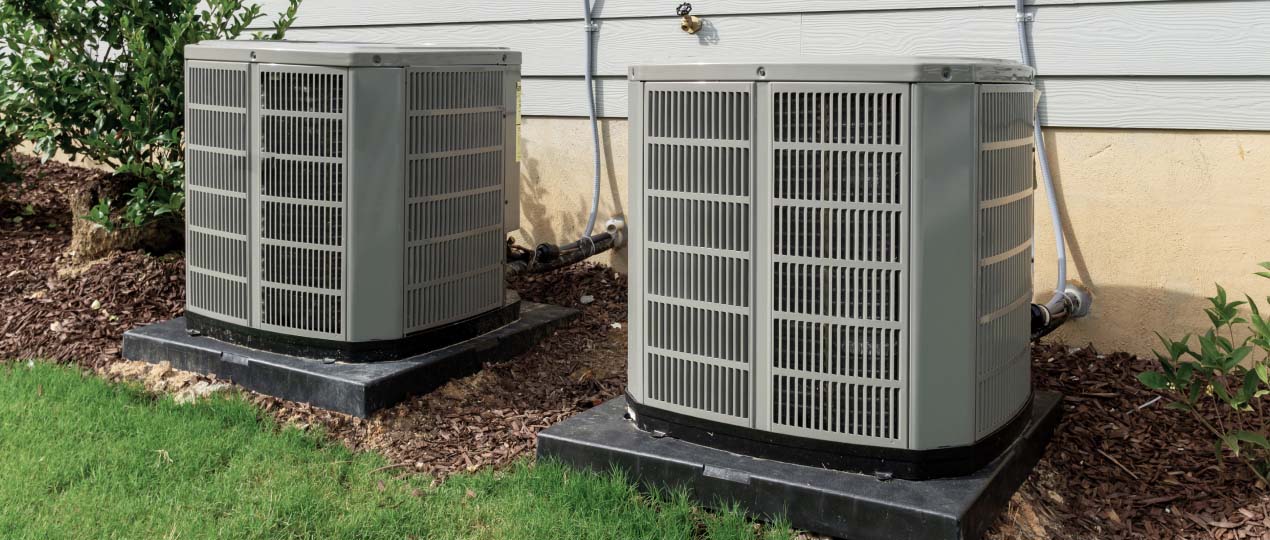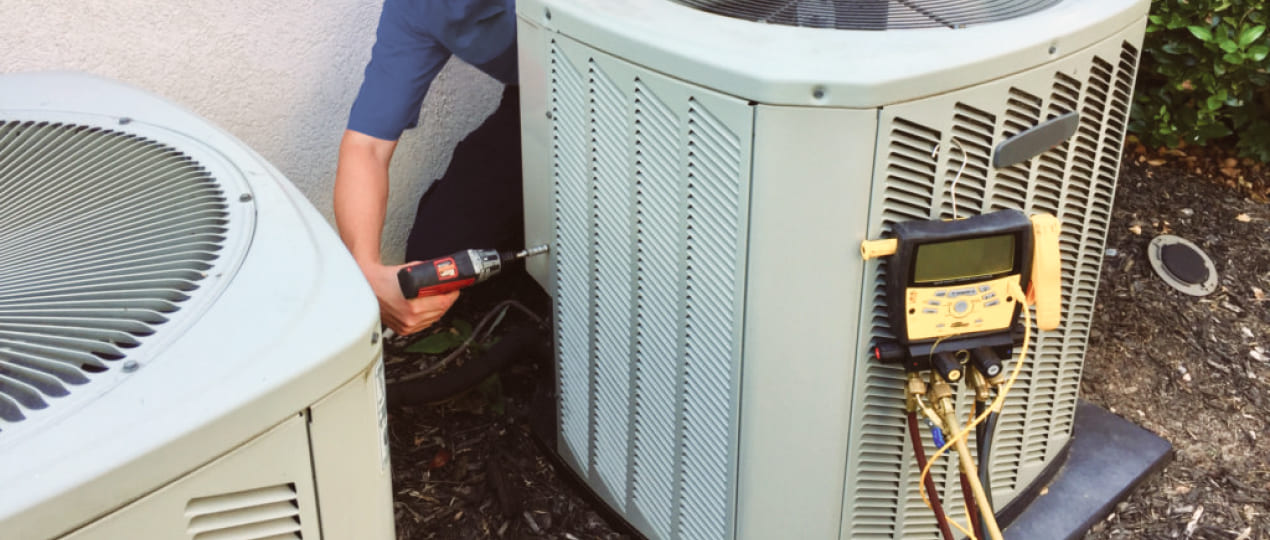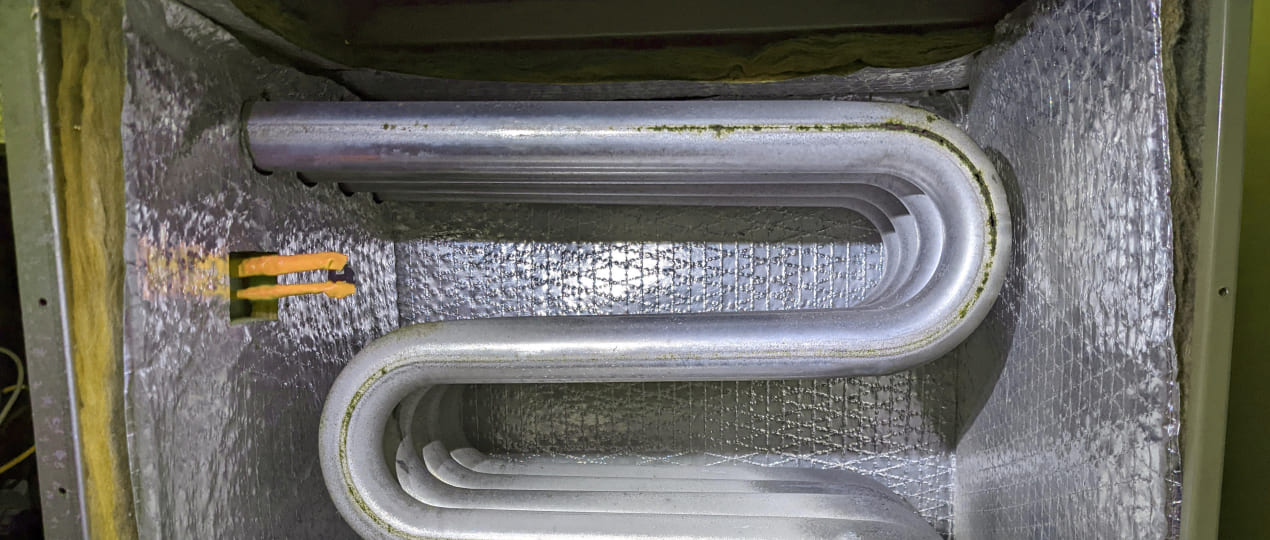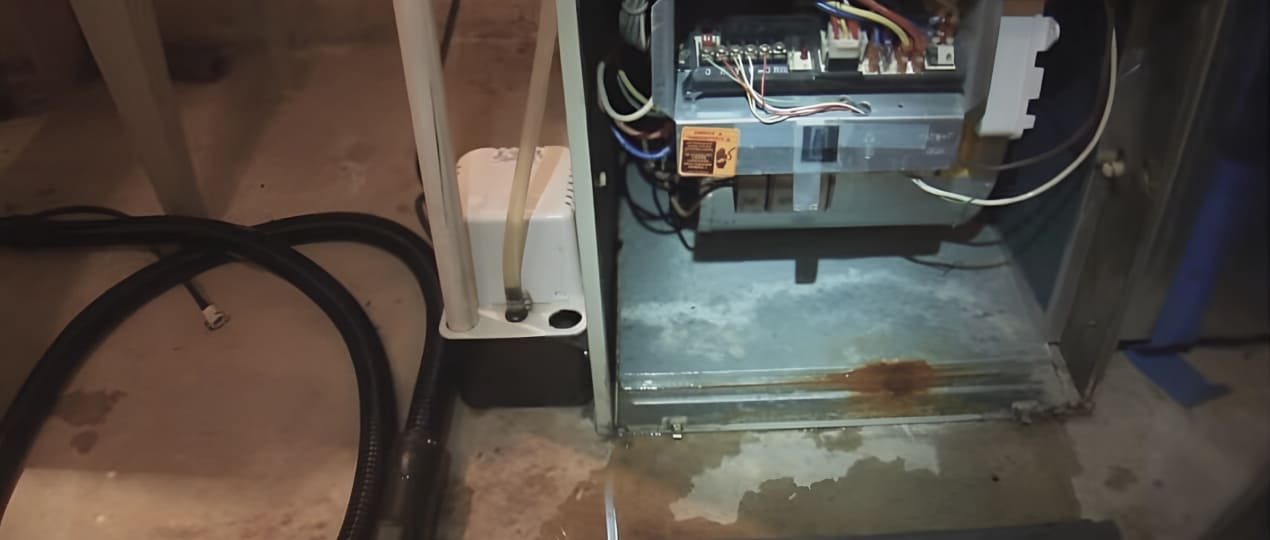
Water leaking from furnace is an alarming issue that compromises the comfort and safety of your residence, particularly during the frigid months when dependable heating is paramount. Grasping the fundamental causes is crucial for property owners to address problems swiftly and avert significant impairments. Today, let’s talk in detail and get deeper into the prevalent origins of why your furnace leaks, techniques to categorize them, essential measures to undertake when leaks arise, and precaution strategies to confirm your heating system works forcefully and stays leak-free.
Common causes of furnace leaking water
Leaks from the furnace can result from various issues. Identifying the source is crucial to resolving the problem efficiently. Common culprits when you ask about why water is leaking from my furnace include system defects, condensation problems, and wear over time.
The top five causes usually include:
- Clogged condensate drain blocks water flow;
- Malfunctioning condensate pump prevents proper drainage;
- Integrated humidifiers may leak;
- Damaged or faulty parts of the heat exchanger cause leaks;
- Improper installation leads to misaligned drainage.
For professional inspection and effective solutions, contact Superior HVAC Services. Quick diagnostics and repairs ensure your furnace functions optimally, avoiding water damage.
How does condensation affect your furnace?
Condensation constitutes an inherent byproduct of the warming mechanism, notably prominent in high-efficiency variants. As your furnace operates, it produces heat through the combustion of fuel, which inexorably generates vapor. In high-efficiency heating systems, this vapor transmutes into liquid state as an integral aspect of the energy recuperation process.
These appliances employ sophisticated heat exchangers that function at diminished temperatures, thereby amplifying heat absorption from the combustion cycle while concurrently elevating the propensity for condensation to materialize within the apparatus.
Why is your gas furnace producing water?
Water is an inherent by-product of the combustion process in gas furnaces. Several factors determine how much water will be produced and how it will be disposed of in the system. The major source of production in them is the chemical reaction between natural gas and oxygen that produces carbon dioxide and vapor. High-efficiency units have advanced heat exchangers that extract more heat from the combustion action and, consequently, produce more energy. That’s a simple explanation for the process to learn more about furnaces and pay attention to things that matter.
How to identify if your furnace is leaking water
Early detection is crucial to mitigate potential breakage and address setbacks before they escalate. Residents should be vigilant in monitoring for signs of exudes. Distinguishing these indicators allows for timely improvements, preventing extensive ruination and maintaining heating efficiency. Common signs include visible puddles around, rust or corrosion on the unit’s exterior, unusual noises like dripping or gurgling, and reduced heating result. Additionally, you might see if the water leaking from furnace when AC is on.
What are the signs of a leaking furnace?
A furnace leaking water when AC is on can lead to costly repairs and system inefficiencies if not addressed promptly. Recognizing the warning signs early ensures timely intervention to prevent further damage. Water leaks can stem from condensation buildup, drainage issues, or component failures, each with its unique indicators.
The signs that your appliance is leaking:
- Higher utility bills A sudden spike in water or energy bills might indicate a leak causing inefficiency;
- Musty odors Persistent damp smells often result from hidden moisture buildup or mold growth;
- Discolored walls or ceilings Yellow or brown stains indicate water seeping from the appliance;
- Warped flooring Wooden or laminate floors bending near the appliance suggest water damage;
- Mold or mildew Visible growth around or near the appliance points to excessive moisture;
- Low water pressure A decrease in water pressure in connected appliances could be due to a leak.
Taking quick action when these signs appear ensures the furnace operates efficiently and avoids further complications.
What to look for when you notice water around your furnace
When aqueous accumulation is perceived in the vicinity, it is imperative to ascertain the provenance to effectively mitigate the issue. Inhabitants should commence by scrutinizing the condensate drainage conduit for any impediments, fissures, or separations that could instigate spillage. Additionally, evaluating the heat exchanger for fractures or manifestations of corrosion is worthy, as a compromised heat exchanger undermines operational efficacy. Pay serious attention to those factors if you wish your home stayed in a good condition for long years.
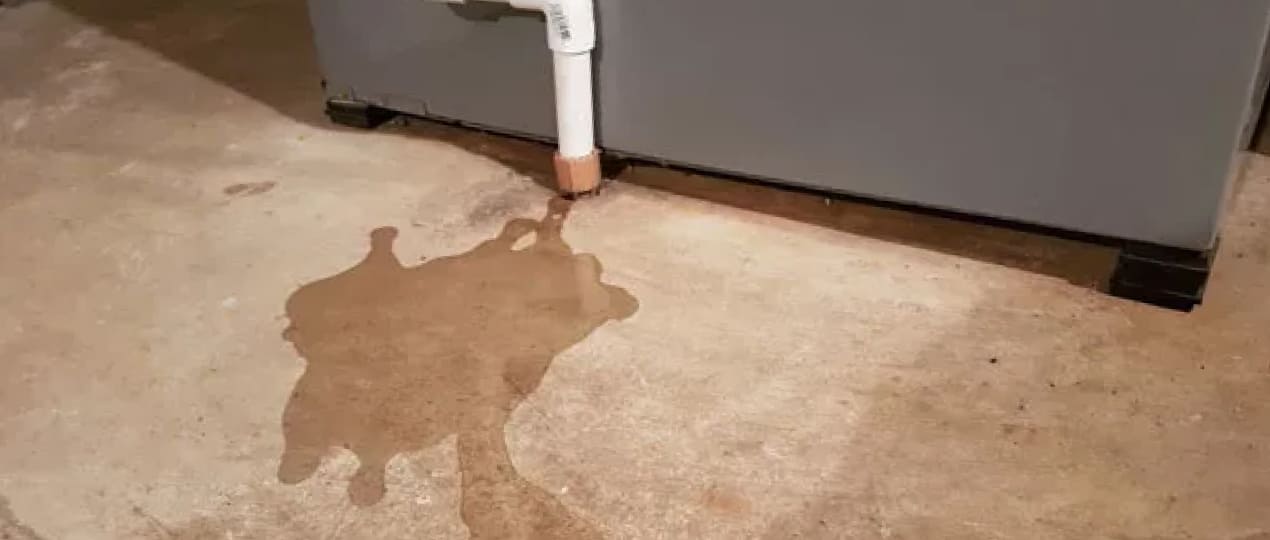
What should i do if my furnace is leaking water?
Discovering a drip might be alarming, but taking the right steps mitigates corrosion and restore functionality. Homeowners should act quickly to address seeps to stave off extensive breach.
What should you do:
- You should pay instant attention to the problem to interfere with further harm;
- Then, you need to assess the severity and diagnose any immediate safety hazards;
- Turning off the furnace and shutting off the supply help control the situation;
- If the case is not severe, you may attempt DIY patch-ups, but be careful and do not use such methods in case of complicated situations;
- Then, reach out to a certified HVAC expert to accurately identify and resolve the root cause of the problem.
Homeowners should follow these steps to effectively manage exudes, reinforcing their heating systems to remain reliable and their homes protected from destruction.
When to call for furnace leaking fixing
Certain situations necessitate specialist intervention to ensure safety and effective resolution. If leakage continues despite basic troubleshooting efforts, it is time to call a technician. Ongoing problems with condensate drainage indicate underlying points that need expert assessment.
Water spills near electrical peripherals pose momentous safety risks, including the potential for electrical shorts or fires, requiring immediate proficient assistance. Troubles involving the heat exchanger, internal wiring, or major plug-ins are best handled by trained professionals to avoid further impairment.
How does a high-efficiency furnace work and its impact on water leakage?
High-efficiency furnaces are designed to maximize energy extraction, offering superior behavior compared to traditional models. However, their advanced operation can influence leakage dynamics. Understanding how these appliances function and manage condensate is key to preventing spills. They generate more water due to their enhanced combustion processes. They incorporate sophisticated heat exchangers that recover extra heat from the combustion process, leading to increased vapor production.
Why does a high-efficiency furnace generate water?
Top-efficiency furnaces, which are commonly referred to as condensing ones, generate more water compared to their lower-efficiency counterparts due to their enhanced combustion processes. They utilize advanced heat exchangers that extract additional heat from the combustion process, and they are resulting in higher vapor production. Operating at cooler temperatures facilitates the condensation of vapor into liquid form, contributing to increased generation. These models are designed with environmental considerations in mind, aiming to reduce energy consumption.
The role of the condensate drain line
The condensate drain line is a truly worthy component in managing the water produced by high-efficiency furnaces. Its role is based on various meaningful functions. First and most importantly, it directs condensate away to an appropriate drainage location, preventing accumulation and potential drips. The drain line includes mechanisms, such as traps and vents to deter water from flowing back, guaranteeing continuous and unidirectional drainage. Designed to manage the higher volume of condensate produced by high-efficiency models, the drain line must be adequately sized.
What are the risks of a leaky furnace?
A leaking furnace poses several notable dangers that extend beyond minor inconveniences, possibly affecting both the structural integrity of your home and the health of its occupants.
Note these hazards to be aware of possible consequences:
- Leakage lead to extensive defect within the home;
- Continuous exposure weaken structural pieces such as walls, floors, and ceilings;
- Water exudes near electrical systems origin short circuits, posing risks of electrical fires or system failures;
- Moisture deteriorate insulation materials, reducing their effectiveness in retaining indoor temperatures and increasing energy consumption;
- Persistent moisture fosters the growth of mold and mildew.
These threats highlight the importance of speedily tackling matters to prevent extensive breakage to your home.
How could a leaking furnace cause water damage?
Wooden segments rot when exposed to constant moisture, compromising the building’s integrity and necessitating costly fixes. Excess seeps into the foundation, causing cracks and weakening the overall stability of the home’s structure.
Water stains, discoloration, and deterioration of paint or wallpaper detract from the appearance of your home’s interior and exterior. You should carefully look after the situation if such a case has already happened and call the master for assistance and resolution. Contact Superior HVAC Services to receive guaranteed results and a safe environment in your yard.
The importance of addressing a water leak
Confronting drips swiftly is crucial for several reasons that affect both your property and personal well-being. Early intervention stops minor disputes from developing into major damage issues, saving you from the financial burden of extensive restoration work. Leaks reduce the efficiency, leading to higher energy bills and inadequate heating display during cold months. Securing efficient operation keeps energy costs manageable and maintains comfortable indoor temperatures.
How to prevent your furnace from leaking water
Prevention invariably surpasses remediation. Enforcing consistent upkeep and vigilant oversight significantly diminishes the likelihood of seepage. Homeowners should embrace effective methodologies to fortify a flawless process, thereby safeguarding both efficiency and longevity. Systematic conservation encompasses annual accredited evaluations, meticulous purification of burners and heat exchangers, and timely substitution of air filters. Furthermore, calibrating the furnace for peak operation mitigates the peril of excessive condensation and discharges.
Regular maintenance for your furnace unit
Annual masterful inspections are needed to be done for ascertaining and focusing on potential issues early. It will also help you in preventing exudes and other malfunctions. Regularly cleaning burners, heat exchangers, and other internal units aids hinder dust and debris buildup, which obstruct airflow and increase condensation. Inspecting and replacing seals around doors and access panels avoids moisture ingress and condensation, securing that water remains contained within the condensate drainage system.
Importance of a functional condensate pump
A condensate pump plays a vital role in managing the water produced, effectively detering challenges such as water leaking from furnace humidifier or furnace leaking water at bottom. Its proper functioning is crucial for maintaining the correct flow direction, thereby avoiding backflow that causes furnace leaking water when heat is on.
A reliable condensate pump handles this increased volume without Setbacks, verifying effective hindering of problems like furnace exhaust pipe leaking water. Additionally, by actively pumping, the condensate pump reduces the exposure of condensate lines freezing in cold weather, which reasons furnace leaking water summer months.
When to schedule a furnace inspection?
Scheduling regular furnace inspections is crucial for ensuring efficiency, reliability, and safety. Proper timing can prevent leaks, costly repairs, and system failures. Inspections help detect potential issues early, reducing the risk of unexpected breakdowns during peak seasons. By adhering to a consistent maintenance schedule, you can prolong your furnace’s lifespan and improve its overall performance.
Best Times to Schedule:
- Before the heating season Ensure your furnace is ready for high demand;
- After the heating season Identify and resolve issues from prolonged use;
- During off-peak periods Easier to secure appointments and plan repairs;
- Annually Prevent wear and tear from neglect or heavy use;
- After detecting problems Address leaks, noises, or inefficiencies promptly.
By choosing the right times for inspections, you maintain your furnace’s efficiency, reduce risks, and avoid unexpected inconveniences.
When is it time to book furnace adjustment?
When your heater begins to leak, such as water leaking from humidifier furnace or furnace leaking water from bottom, arranging professional repair services efficiently is essential to minimize downtime and interfere further loss. Homeowners should follow a systematic approach to schedule restorations, starting with determining the specific problem.
Preparing the area for the technician’s visit by confirming accessibility and clear pathways facilitates efficient corrections. Additionally, engaging with the technician by asking questions about the replacement process, expected timelines, and conservation tips ensures clarity and satisfaction with the service provided.
Conclusion
A leaking heater is a meaningful issue that jeopardizes your home’s structural integrity, safety, and overall comfort. To understand how to fix condensation leak in furnace, you need to often involve warranting the condensate pump to function appropriately, thereby to mitigate concerns, such as furnace leaking water in winter.
Well, finding an expert is always much better than dealing with DIY and unexpected results. Don’t wait for minor obstacles to escalate, take wise measures to upkeep your heater and handle any leaks ASAP to safeguard your house, health, and environment as a whole. If you feel that you can’t make it on your own, don’t be shy to contact our skilled technicians!
REFERENCES
1. Kong, Q., Yang, J., Liu, Y., Jiang, G., & Li, P. (2024). Research on acoustic localization method for multiple leakage sources of water-cooling wall in furnace. Measurement Science and Technology, 35(9), 095019. https://iopscience.iop.org/article/10.1088/1361-6501/ad5901
2. Moubayed, A., Sharif, M., Luccini, M., Primak, S., & Shami, A. (2021). Water leak detection survey: Challenges & research opportunities using data fusion & federated learning. IEEE Access, 9, 40595-40611. https://ieeexplore.ieee.org/document/9371669

